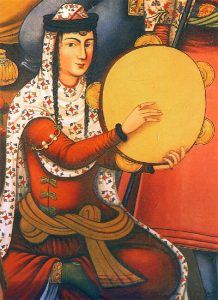The pipe organ can be seen as the very first attempt to create a synthesizer. Many organ stops are named after other instruments, and combinations of organ stops are used to imitate further ones. Composers wrote pieces to make use of those imitations, and organ players tried to play them in a manner so that the imitated instrument became more clear.
One of the more curious attempts are pieces to imitate the steady beat of a tambourine with the left hand, while the right plays some melody. One example is the Tambourin of Michel Corrette (1707 -1795), as found in his Deuxième Livre d’Orgue (1750). Here’s a recording of Marie-Hélène Geispieler. Sheet Music of this Tambourin piece is available via the International Music Score Library Project.
Concerning the registration, I found an example in the book »The registration of baroque organ music« by Barbara Owen, bottom of page 212. She writes that the melody shall be played on the Grand Orgue with the petit Bourdon of 4 feet, the Quarte (2?’?) and the Doublette of 2 feet. The left hand plays on the Positif using both 8 feet stops with the Larigot.
According to the instrument used, it may require to swap the keybeds. Appearently such pieces have mainly been intended to be used during Xmas.

